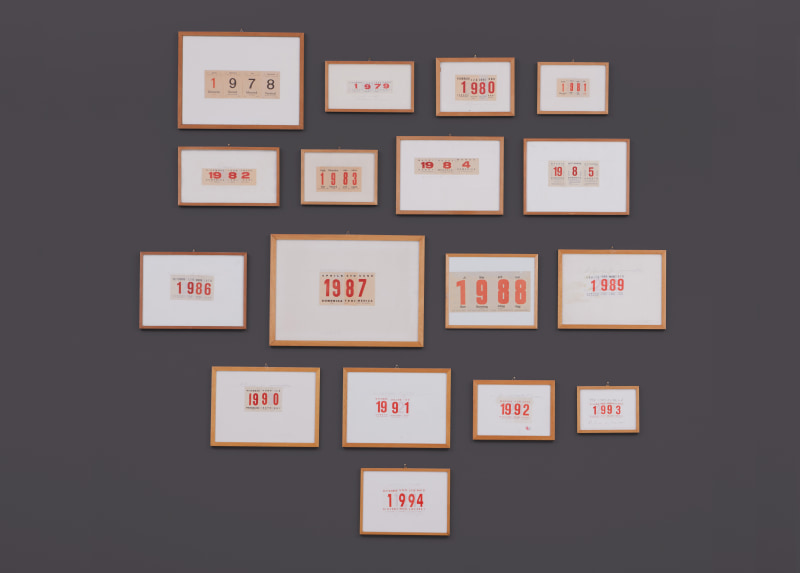“I have done a lot of work with the concept of order and disorder… when I look at these pairings of apparently antithetical concepts, I think that everything contains its opposite.” – Boetti, 1988
Born in Turin, Italy, in 1940, Alighiero Boetti quickly gained recognition in the Arte Povera movement in the late 1960s. Incorporating simple materials such as cardboard and metal was Boetti’s way of recalling the curious and playful gestures that are instinctive in children. He had already shown several times in Milan and Turin and was then invited to participate in an exhibition curated by Harald Szeemann at the Kunsthalle, Bern in 1969. His work is generally placed at the beginning of this movement, it in fact contains a broader conceptual repertoire: After moving to Rome in 1972 his works demonstrate his preoccupation on the temporal and processual dimension of art, but also on the notions of duality and identity. It was also around this time that the artist changed his name to Alighiero e Boetti and started signing his work this way – as if he were two artists in one person – to reflect the opposing factors often presented in his work such as the individual and society, error and perfection, order and disorder. Starting at the beginning of the 1970s he also travelled constantly to distant destinations including Guatemale, Ethiopia, Japan, and, most frequently, Kabul, in Afghanistan. It was in Kabul 1971 that he set up a hotel and commissioned artisans to create embroideries, most famously his mappe, intricate maps of the world coloured according to political affiliation. These works gained him international recognition and his first exhibition in the US at the John Weber Gallery, New York in 1973.
In addition to the well-known embroideries, from the end of the 1960s through his premature death in 1994 he created a vast trove of works on paper that explore a multitude of ideas, processes and themes. These works on paper offer a kaleidoscopic glimpse into the complex mind of the artist; they are at once cryptic, witty and cerebral. One series of such works are the lavori biro, for which he would invite friends and acquaintances, to fill large colored sections by ball pen thus to further address the component of collaboration.
Later works on paper such as Senza titolo (dove le parallele vanno ad incontrarsi…), 1989, incorporate various techniques such as collage, stenciling, stamping and wordplay some of the myriad practices Boetti employed with his highly experimental works on paper. Prominent in those works are letters and figures, words and numbers, phrases and dates – in other word language, and linguistic meaning, which oscillates between hidden and explicit.
Boetti's body of work is at once highly conceptual and strikingly visual, his radical ideas and elaborate endeavors making him one of the most influential and fascinating artists of the 20th century, where the artist’s works on paper play a significant role in his oeuvre and encapsulate his vision as a whole.
In 2001, the Venice Pavillon was completely dedicated to Boetti’s work and he has been the subject of numerous solo exhibitions at institutions such as the Museum of Modern Art, New York (2012); Tate Modern, London (2012); Whitechapel Gallery, London (1999); Museum für Moderne Kunst, Frankfurt (1998) and Museum für Moderne Kunst, Vienna (1997). His works are part of important collections such as Museum of Modern Art, New York and Stedelijk Museum, Ghent.
